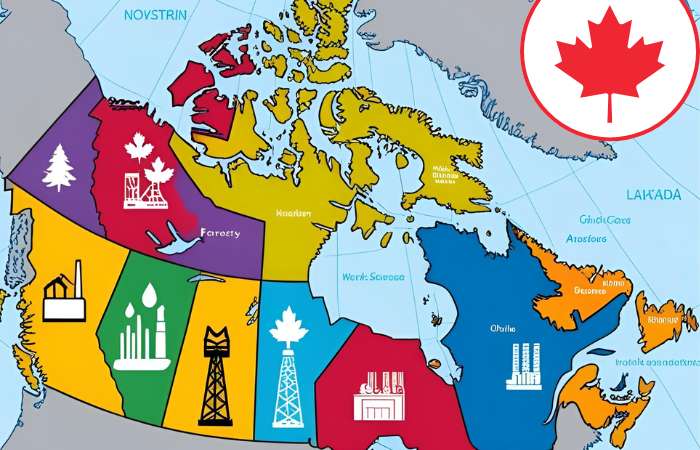Enter your email below to receive weekly updates from the Ashton College blog straight to your inbox.

How PNPs Boost Canada’s Local Economies- Provincial Nominee Programs (PNPs) have become a cornerstone of Canada’s immigration system, playing an essential role in driving local economic growth while helping provinces meet their unique demographic and labour market needs. For immigration practitioners like RCICs, understanding how PNPs function beyond simply facilitating immigration applications is key to appreciating their broader impact on Canada’s economy.
PNPs allow Canadian provinces and territories to nominate individuals who meet specific criteria for permanent residence. Unlike the federal Express Entry system, PNPs give provinces greater control to target immigrants with skills and experience aligned with local labour market demands. This flexibility helps smaller or less-populated regions attract and retain newcomers who will contribute directly to their economies.
One of the primary strengths of PNPs is their ability to address labour shortages in specific industries and occupations within a province. For example, provinces facing a shortage of healthcare workers, tradespeople, or IT professionals can tailor their nominee streams to attract candidates with these skills. This targeted approach not only fills critical gaps but also supports sustainable economic development by ensuring local businesses have the talent they need to grow.
PNPs also encourage immigration to smaller communities and regions outside major urban centres, which often struggle to attract and retain skilled workers. By nominating candidates with ties to these communities or who have skills needed locally, PNPs help distribute economic benefits more evenly across Canada. This supports the growth of diverse economies and revitalizes smaller towns by increasing their workforce and consumer base.
Recent updates to Provincial Nominee Programs demonstrate a careful balance between meeting Canada’s broader immigration targets and addressing the specific economic priorities of each province. By tailoring nominee streams to focus on high-demand skills, regional labour shortages, and entrepreneurial opportunities, provinces ensure that immigration supports sustainable local economic development. This targeted approach not only helps communities thrive but also aligns immigration intake with real-time market needs, reflecting the dynamic relationship between immigration policy and economic growth.
For immigration practitioners, staying informed about these changes is essential to effectively guide clients through pathways that best match their skills and the evolving economic landscape.
Beyond just filling jobs, PNPs contribute to economic growth through entrepreneurship and innovation. Many provinces offer streams specifically designed to attract business immigrants who can invest in and start new ventures locally. These entrepreneurs create jobs, stimulate local markets, and introduce new products and services that enrich regional economies.
Additionally, new immigrants bring diverse perspectives and experiences that enhance creativity and productivity in workplaces. This diversity can lead to stronger business performance and greater economic resilience in communities across Canada.
While PNPs offer excellent opportunities, immigration practitioners must navigate complex and often changing nomination criteria, processing times, and documentation requirements. Success in this area requires up-to-date knowledge, careful case assessment, and strategic client counselling to align their profiles with the right provincial streams. Courses that provide a comprehensive overview of Provincial Nominee Programs, including their selection criteria and the interplay between provincial and federal authorities, can be invaluable in keeping practitioners informed and prepared.
Moreover, practitioners play a vital role in helping clients understand the economic rationale behind PNP selection criteria. This insight supports realistic expectations and encourages newcomers to engage with local labour markets in ways that maximize their contributions and integration.
Recently, the Federal government has significantly reduced the processing targets for Provincial Nominee Programs to 50%. This shift has added new layers of complexity—not only for the PNPs themselves, but also for immigration practitioners and their clients, as more restrictive selection processes are being introduced. In light of these changes, it is more important than ever for practitioners to stay current on how each province is adapting and to understand how these evolving criteria impact access for skilled workers and entrepreneurs. Staying informed is essential to effectively guide clients through a more competitive and selective immigration environment.
Provincial Nominee Programs are much more than immigration pathways; they are powerful tools that provinces use to drive economic growth, respond to labour market realities, and build vibrant communities across Canada. By aligning immigration policy with local economic needs, PNPs ensure that newcomers not only find opportunities but also contribute meaningfully to the prosperity of their chosen provinces.
For immigration professionals, deepening your understanding of PNPs and recent updates equips you to better support clients and help them seize the opportunities these programs offer. Ultimately, this strengthens the connection between immigration and economic development — a win-win for individuals, communities, and Canada as a whole.
The information contained in this post is considered true and accurate as of the publication date. However, the accuracy of this information may be impacted by changes in circumstances that occur after the time of publication. Ashton College assumes no liability for any error or omissions in the information contained in this post or any other post in our blog.